You might understand that body movement is pretty complicated, almost a lucky accident happening beyond your control. Each of our movements is a brain and Central Nervous System (CNS) solution to a complex problem. The “rules” of the problem are called constraints. Typically, they fall into three categories:
1. Task 2. Environment 3. Organism
Task constraints involve exactly what you might imagine. Pick up an object of “X” pounds. Carry it “Y” distance. So, if the task at hand is picking up a bowling ball, then picking up a pebble doesn’t follow the same rules. Environmental constraints are equally intuitive. What sort of environment are you performing this task in? This involves varied textures and terrain, or social factors like peer pressure or support.
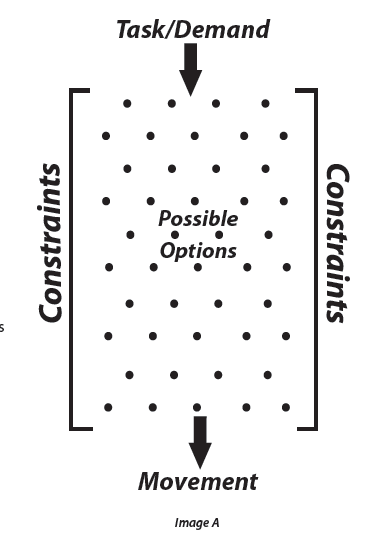
OK, now note how you can’t do a whole lot about those first two constraint types. This is where the organismic constraints come into play. These involve things like strength, mood, fatigue, and similar items. When you combine all these constraints, you get something like this happening (Image A) , and all of your movements emerge out of this complex Plinko board-like interaction that your brain and Central Nervous System controls.
Mobility plays a huge role here. Just think of mobility as “movement potential.” It’s a key constraint on what muscle options your brain has access to. Improve control and coordination of your muscles and you increase ranges of motion in joints. When this happens, you radically expand what you’re capable of in sport as well as in day to day life. Body mobility widens in your body “Plinko” box and your brain has access to more efficient options. More options make you a more resilient, adaptable, and decrease injuries.
Cardio doesn’t do that. Strength training doesn’t (always) do that. Mobility and stability is like compound interest in the body movement world. If you consistently put a little bit in, then you can expect improvement in all other areas across the board. Which means less wear and tear on body parts due to less compensation by your brain.
Here’s the thing: It takes a heck of a lot more than just stretching, foam rolling and exercise to improve your mobility and stability. Those might slightly improve your flexibility, but they don’t do much to teach your body how to put that range of motion to use or provide you with joint stability. They have nothing to do with improving coordination and muscle control either. Training on a Bosu ball for stability when muscles are already unstable just results in more instability or injury.
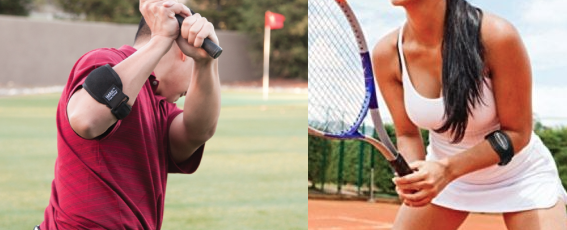
Constant training and exercise can’t control muscle contraction timing because the harder you train and push your body, the faster your body’s stress threshold is going to be reached.
Put more simply: To increase your range of motion, you have to be able to train muscles through their FULL Range of Motion. No foam rollers, tape, forearm strap or other toys necessary.
.Cheers….DRock
Want to learn more about improving your functional movement and sports performance? Follow Dianne’s blog: https://dtasmblog.wordpress.com
Dianne Rockefeller is a Licensed Massage Therapist, National Academy of Sports Medicine – Certified Personal Trainer, Certified Orthopedic Manual Therapist, Certified Myoskeletal Therapist, Certified Kinesio Taping Practitioner, Certified Cupping Therapist, and Muscle Activation Techniques Practioner (MAT). She has treated athletes of all levels, from youth to professional, from all sports. She brings a very unique perspective to manual therapy utilizing her experience with motion analysis and sport. Her blend of advanced integrated skills along with practical and rehabilitation experience deliver exceptional results. Additionally, Dianne is a self-proclaimed scholar of “Applied Performance Manual Therapies“. Contact Dianne at drock@dtasm.com or 210-973-4848.
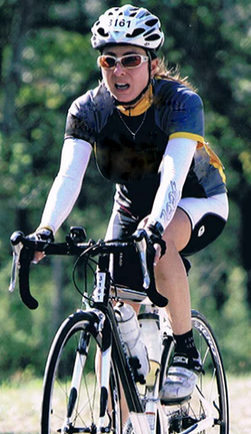

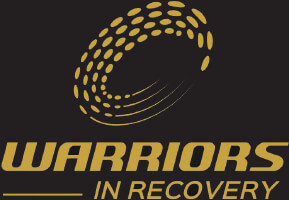



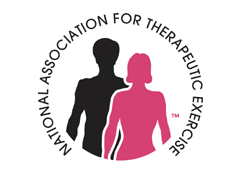


Great !!!!
Enviado desde mi iPhone
El 16/11/2016, a las 15:38, Perform, Recover, Repeat <comment-reply@wordpress.com> escribió:
drockefeller posted: “You might understand that body movement is pretty complicated, almost a lucky accident happening beyond your control. Each of our movements is a brain and Central Nervous System (CNS) solution to a complex problem. The “rules” of the problem are called co”